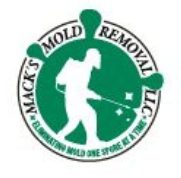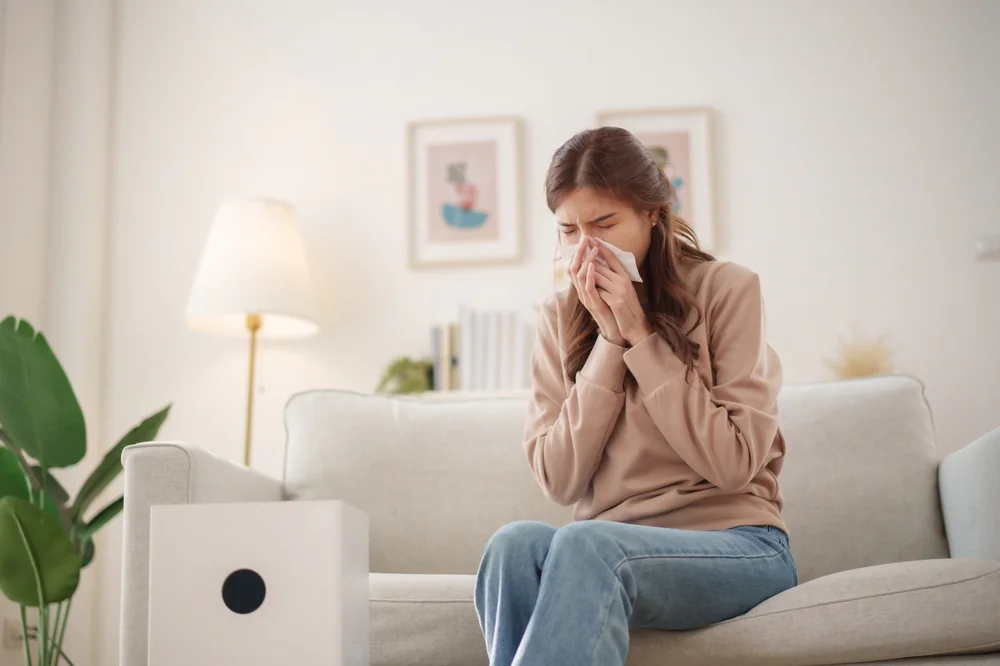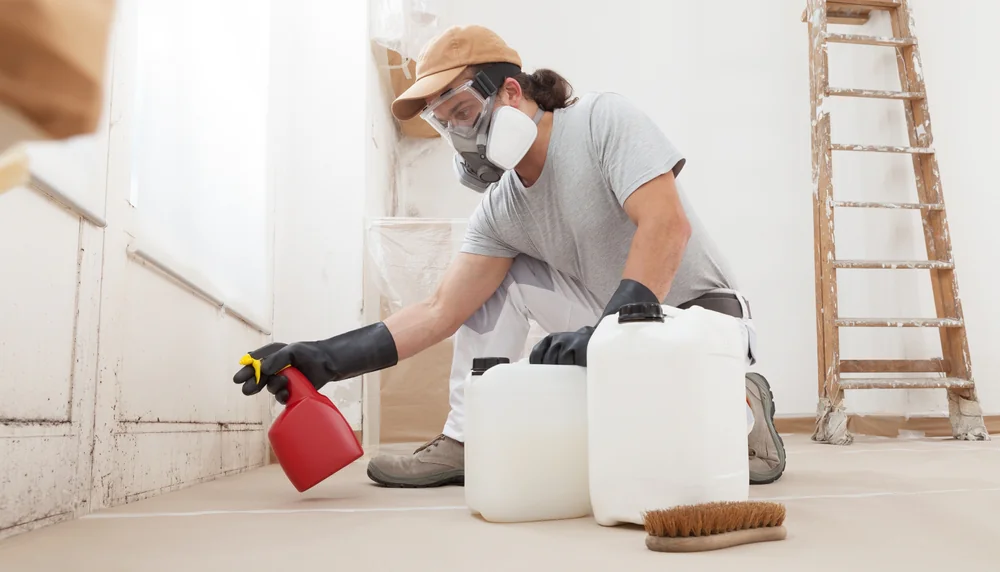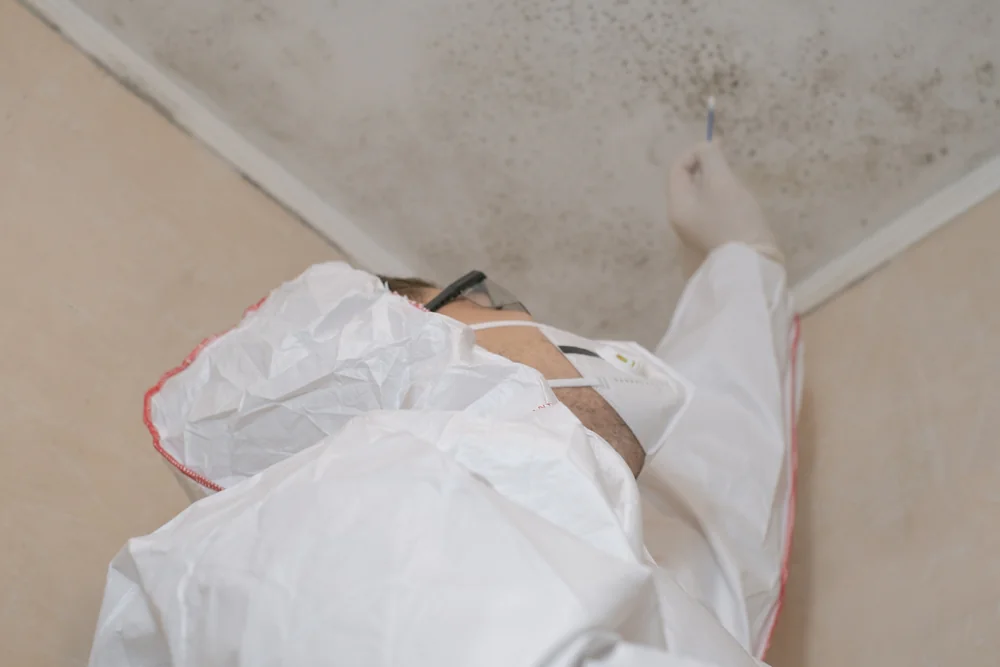Summary:
What Air Quality Testing Actually Reveals in Bucks County Homes
Air quality testing goes far beyond what you can see or smell. While you might notice obvious signs like visible mold or strong odors, professional testing uncovers the hidden contaminants that standard home inspections miss entirely.
Most Bucks County homeowners are surprised to learn their indoor air contains pollutant concentrations that are two to five times higher than outdoor levels. Our testing process identifies specific mold species, measures airborne particle counts, and detects volatile organic compounds that could be affecting your family’s health without any obvious symptoms.
Our comprehensive approach examines both air samples and surface testing to create a complete picture of your indoor environment. This data-driven assessment reveals not just what’s present, but the concentration levels that determine whether immediate action is necessary.
Hidden Mold Growth Behind Walls and in HVAC Systems
The most dangerous mold problems are often the ones you can’t see. Behind drywall, inside ductwork, and in crawl spaces, mold colonies can flourish for months or years before becoming visible on surfaces.
Air quality testing detects these hidden growth patterns by measuring spore concentrations in different areas of your home. Elevated counts in specific rooms often indicate concealed moisture problems that haven’t yet produced visible signs. Your HVAC system can actually distribute these spores throughout your entire home, turning a localized problem into a whole-house health concern.
In Bucks County’s humid climate, basements and attics are particularly vulnerable to hidden mold growth. The combination of seasonal temperature changes and moisture intrusion creates perfect conditions for mold to establish colonies in wall cavities and insulation. Our professional testing identifies these problem areas before they require expensive structural repairs.
Many homeowners discover that persistent allergy symptoms or respiratory issues that seemed unrelated to their home environment were actually caused by airborne mold spores circulating through their living spaces. Our testing process pinpoints the exact source, whether it’s a small leak that’s been ignored or inadequate ventilation that’s allowing humidity to accumulate in hidden spaces.
Early detection through air quality testing prevents minor moisture issues from becoming major remediation projects. When mold growth is caught before it spreads extensively, the cleanup process is faster, less invasive, and significantly more affordable than waiting until visible damage appears.
Ventilation Problems That Create Dangerous Air Circulation
Poor ventilation doesn’t just make your home feel stuffy—it creates a cascade of air quality problems that can seriously impact your family’s health. When fresh air isn’t circulating properly, contaminants build up to dangerous levels while humidity creates perfect conditions for biological growth.
Air quality testing reveals how effectively your home’s ventilation system is working by measuring carbon dioxide levels, humidity percentages, and the presence of volatile organic compounds that should be naturally diluted with fresh air exchange. Many Bucks County homes, especially older ones, have ventilation systems that were never designed to handle modern insulation levels and airtight construction.
Our testing process often uncovers negative pressure issues where your home is pulling in unfiltered air from crawl spaces, attics, or even outdoor pollution sources. This happens when exhaust fans and appliances create suction that draws air through unintended pathways, bringing contaminants directly into your living spaces.
Inadequate ventilation also allows cleaning products, cooking fumes, and off-gassing from furniture and building materials to accumulate to unhealthy levels. What seems like normal household activity can create indoor pollution that’s worse than outdoor air quality on a smoggy day.
Our professional testing identifies specific ventilation deficiencies and measures their impact on your indoor environment. The data shows exactly where fresh air isn’t reaching, which rooms have stagnant air circulation, and how these problems are affecting the overall air quality throughout your home. This information is crucial for designing effective solutions that address the root cause rather than just masking symptoms with air fresheners or purifiers.
Want live answers?
Connect with a Mack's Mold Removal expert for fast, friendly support.
Poor Air Quality Symptoms That Signal Testing is Needed
The symptoms of poor indoor air quality often mimic other health issues, making them easy to dismiss or misdiagnose. Persistent headaches, unexplained fatigue, and respiratory irritation that seems to improve when you leave the house are classic warning signs that your indoor environment needs professional evaluation.
Many families suffer from these symptoms for months or years without connecting them to their home’s air quality. The gradual onset makes it difficult to identify the pattern, especially when symptoms affect family members differently based on their individual sensitivities and the amount of time they spend indoors.
Understanding when these symptoms indicate a need for air quality testing can help you take action before health problems become more serious or structural damage becomes extensive.
Respiratory and Allergy Symptoms That Won't Go Away
Chronic respiratory symptoms that persist despite medical treatment often have environmental causes that doctors can’t identify without knowing about your home’s air quality. Persistent coughing, especially at night or early morning, frequent sinus congestion, and allergy symptoms that seem worse at home all point to airborne contaminants in your living environment.
Children and elderly family members are particularly vulnerable to poor indoor air quality, often showing symptoms first or experiencing more severe reactions than healthy adults. If multiple family members are dealing with similar respiratory issues, or if symptoms consistently improve when you’re away from home for extended periods, your indoor air quality deserves immediate attention.
The connection between indoor air and respiratory health becomes clearer when you consider that people spend roughly 90% of their time indoors, where pollutant concentrations are typically much higher than outdoor levels. Mold spores, dust mites, pet dander, and chemical vapors can all trigger respiratory responses that become chronic when exposure is constant.
Air quality testing identifies the specific triggers affecting your family’s respiratory health. Rather than treating symptoms with medications that provide temporary relief, testing reveals the source so you can eliminate the cause. This approach is particularly important for children with asthma, where environmental triggers can cause serious attacks that require emergency medical care.
Our testing process measures airborne allergens and irritants at levels that are medically significant, providing the data needed to determine whether your symptoms are environmentally related and what steps are necessary to create a healthier indoor environment.
Cognitive and Energy Issues Linked to Indoor Air Pollution
Poor indoor air quality doesn’t just affect your lungs—it impacts your brain function, energy levels, and overall cognitive performance in ways that many people never connect to their home environment. Difficulty concentrating, memory problems, and persistent fatigue are often early indicators of indoor air pollution that’s affecting your neurological function.
Carbon dioxide buildup from inadequate ventilation can cause drowsiness and reduced mental clarity, while volatile organic compounds from household products and building materials can trigger headaches and cognitive fog. These symptoms are often dismissed as stress or aging, but they frequently improve dramatically when indoor air quality is addressed.
The impact on productivity and quality of life can be significant, especially for people who work from home or spend extended time in spaces with poor air circulation. Students may struggle with concentration and academic performance, while adults might experience decreased work efficiency and increased irritability without understanding the environmental cause.
Mold exposure, in particular, can cause neurological symptoms that range from mild cognitive impairment to more serious issues like memory loss and mood changes. Some individuals are extremely sensitive to mycotoxins produced by certain mold species, experiencing symptoms that can be debilitating when exposure is ongoing.
Air quality testing provides objective data about the contaminants that could be affecting your cognitive function and energy levels. Our comprehensive analysis reveals whether your symptoms align with specific pollutants present in your home, giving you the information needed to make targeted improvements that can restore your mental clarity and physical energy.
Our professional testing also establishes baseline measurements that allow you to track improvements after remediation work is completed, ensuring that the solutions we implement are effectively addressing the problems that were impacting your cognitive health.
Taking Action When Air Quality Testing Reveals Problems
Professional air quality testing transforms invisible health threats into actionable data that protects your family and preserves your property value. Our comprehensive analysis reveals exactly what’s compromising your indoor environment and provides the roadmap for creating a healthier home.
The investment in testing pays for itself by identifying problems before they require expensive structural repairs or cause serious health issues that result in medical bills and lost productivity. Early detection and proper remediation create lasting solutions that improve your quality of life while protecting your most valuable asset.
When air quality testing reveals hidden problems in your Bucks County home, we provide the expertise and EPA-approved methods necessary to restore your indoor environment to healthy standards. Our professional remediation addresses the root causes, not just the symptoms, ensuring your family can breathe easier for years to come.




